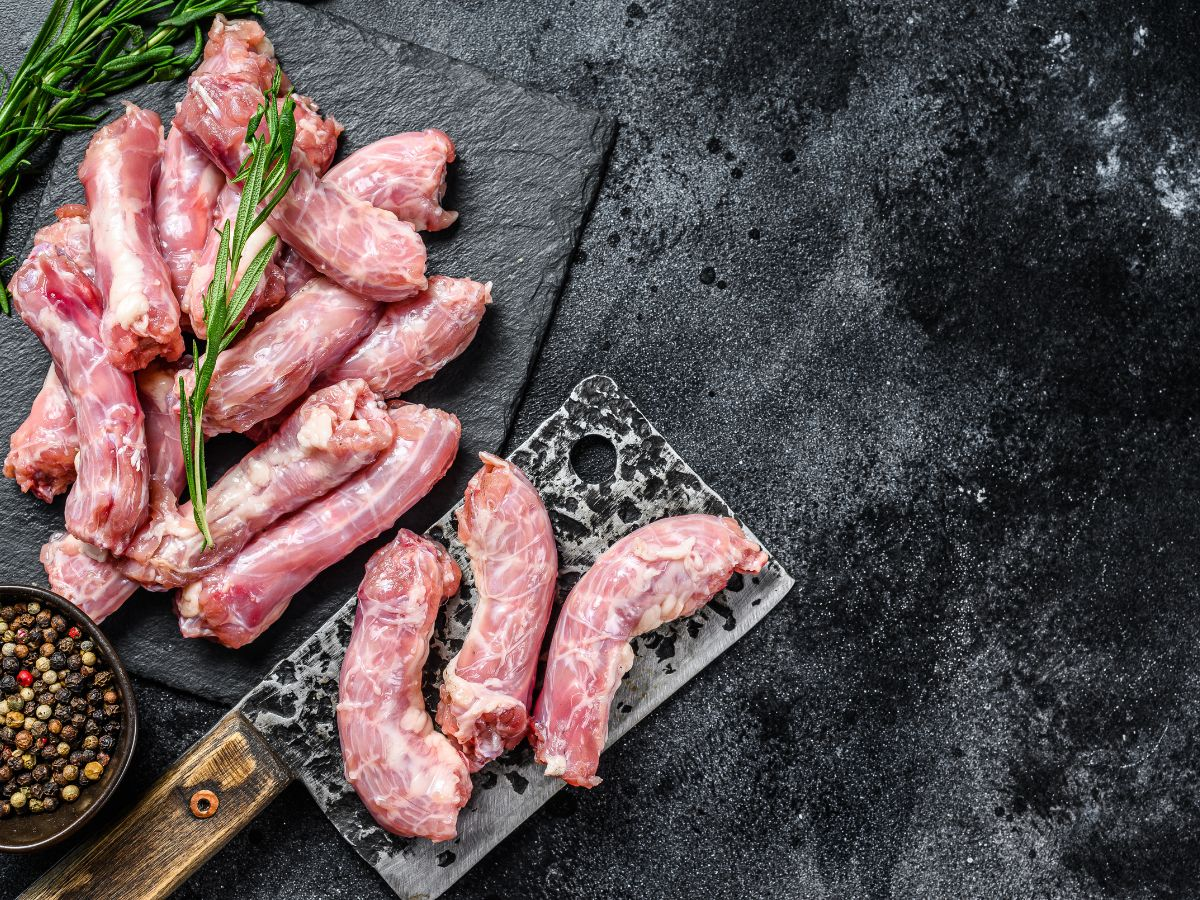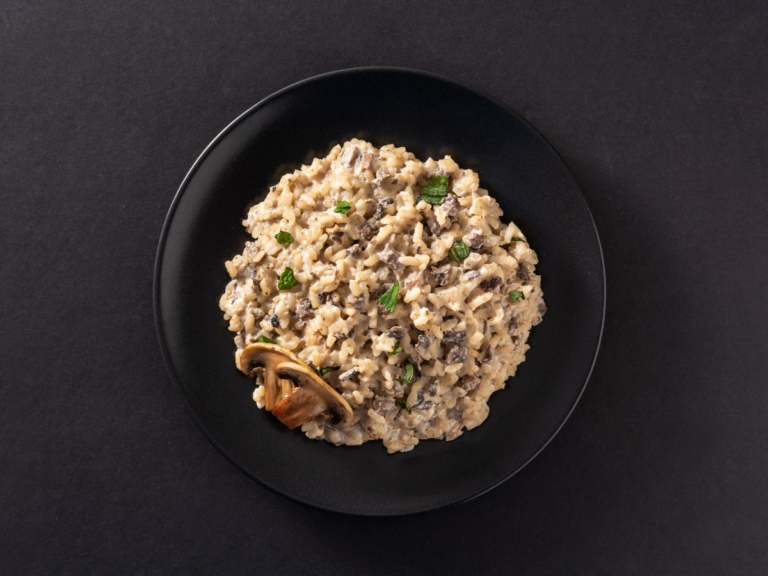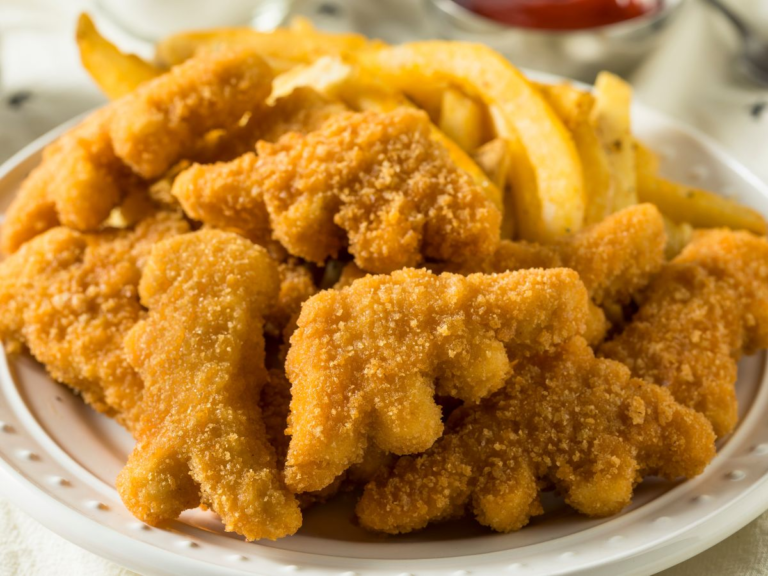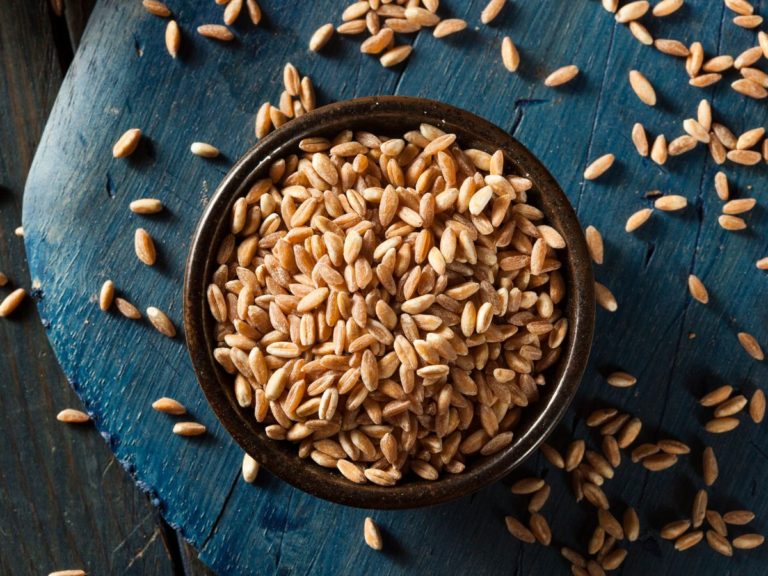How to Cook Turkey Necks for Dogs: How to Cook Them Safely and Keep Your Pup Begging for More
Is there anything like seeing your furry friend’s eyes light up joyfully? If you’re searching for an extraordinary way to spoil your four-legged companion, you’re in for a treat!
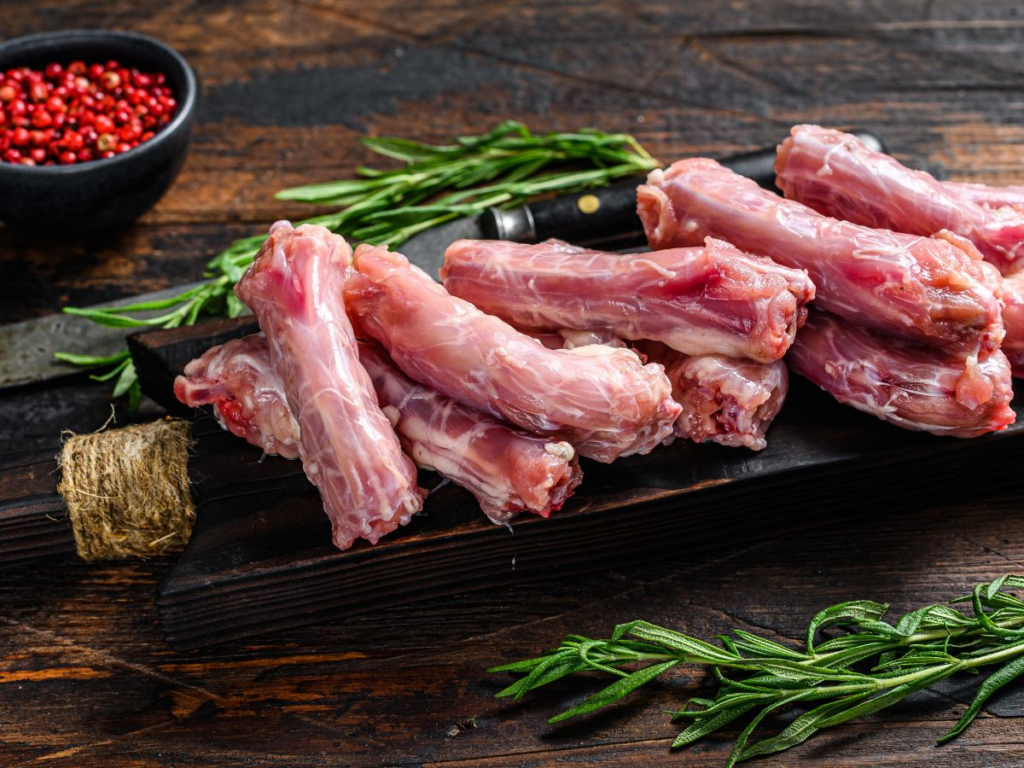
Let’s explore how to cook turkey necks for dogs, transforming ordinary meals into extraordinary, tail-wagging sensations.
Cook Up a Canine Carnival of Flavors!
Cooking fresh, wholesome meals for your active dogs, or mixing in some fresh food, is the best gift you can give your beloved pets. The satisfaction of knowing you’re treating your furry friends to nutritious, homemade delights is unparalleled.
We’re here to unlock the secrets of making turkey neck treats that will have your canine companion doing flips of joy.
Table of Contents
How to Cook Turkey Necks for Dogs – An Appetizing Adventure
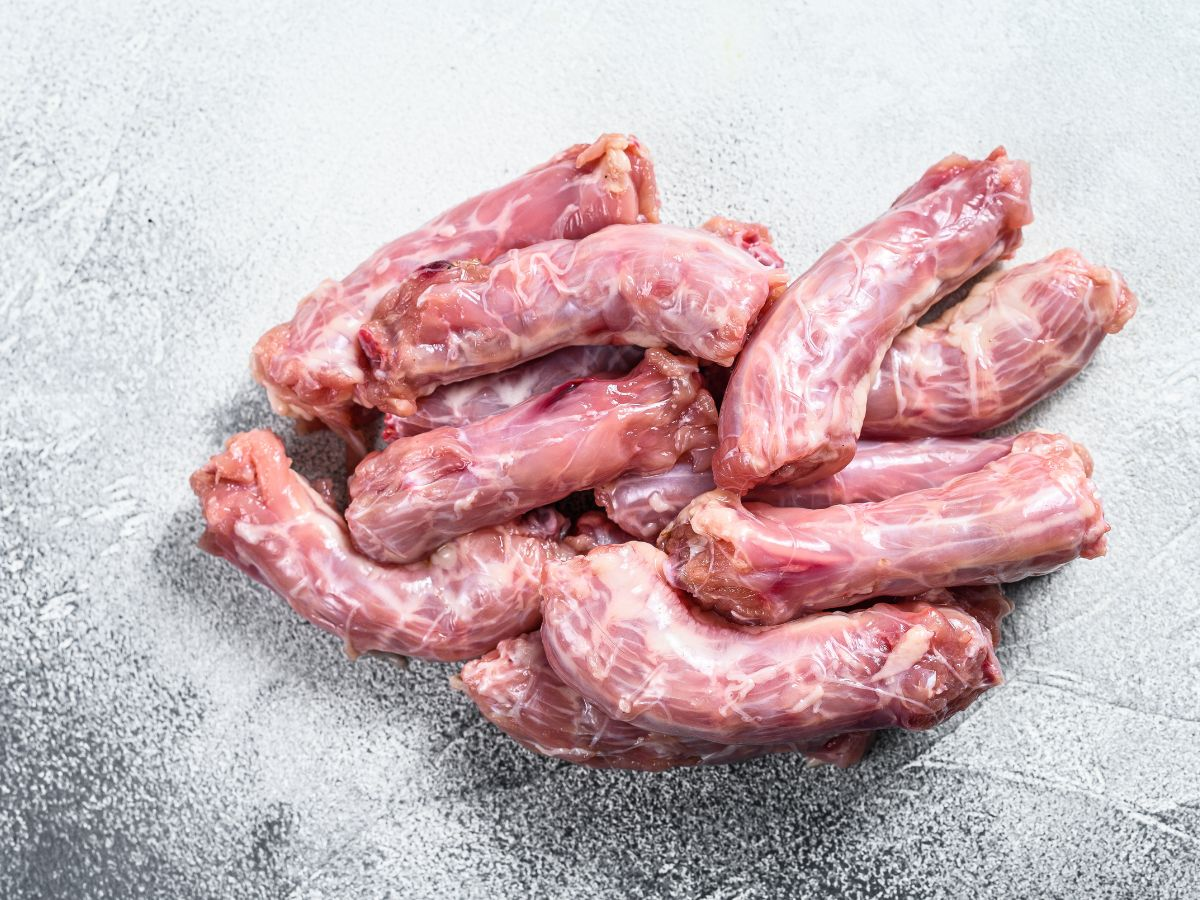
If you’ve ever wondered, “Can dogs eat turkey necks?” the answer is a resounding “yes!”
When prepared correctly, Turkey or Chicken necks can be a fantastic addition to your dog’s diet.
They are a source of lean protein, and gnawing and chewing on the bones feeding raw turkey necks can also help promote healthy dental hygiene.
However, following simple steps ensures the turkey necks are safe, delicious, and vet-approved.
The Excitement of Cooking for Your Dog
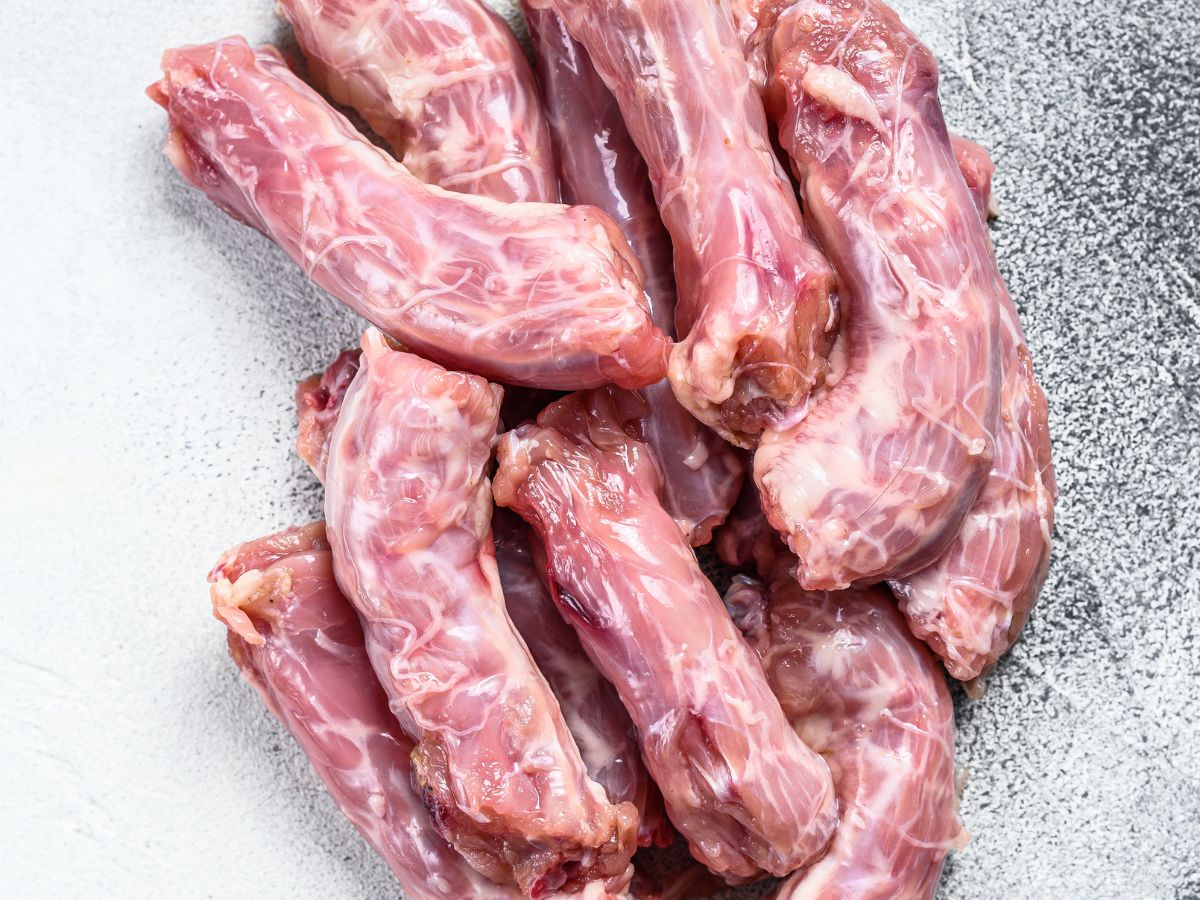
Picture this: your dog’s tail wagging with so much enthusiasm that it almost becomes a blur, their eyes shining with anticipation, and their nose twitching as they catch the scent of a homemade delight just for them.
That’s the sheer joy of cooking for your dog. Every dish you prepare becomes a gesture of love, care, and an unspoken promise of tasty adventures.
Turkey Neck Treats: A Pawsome Choice
So, why choose turkey necks for your pup’s culinary escapades? These bony delights offer a myriad of nutritional benefits, too:
Healthy Protein: Turkey necks are packed with lean protein, making them an excellent addition to your dog’s diet.
Dental Health: Chewing on turkey necks can help keep your dog’s teeth clean with the gums extra healthy.
Safety Assurance: Cooking turkey necks ensures they’re free from harmful bacteria and reduces the risk of splintering bones.
How to Cook Raw Turkey Necks for Dogs: Three Tail-Wagging Techniques

Now, let’s dive into the three exciting methods of preparing turkey neck treats for your furry friend. These methods are simple, safe, and sure to make your dog drool with delight:
Boiling: A Bubbling Canine Delight
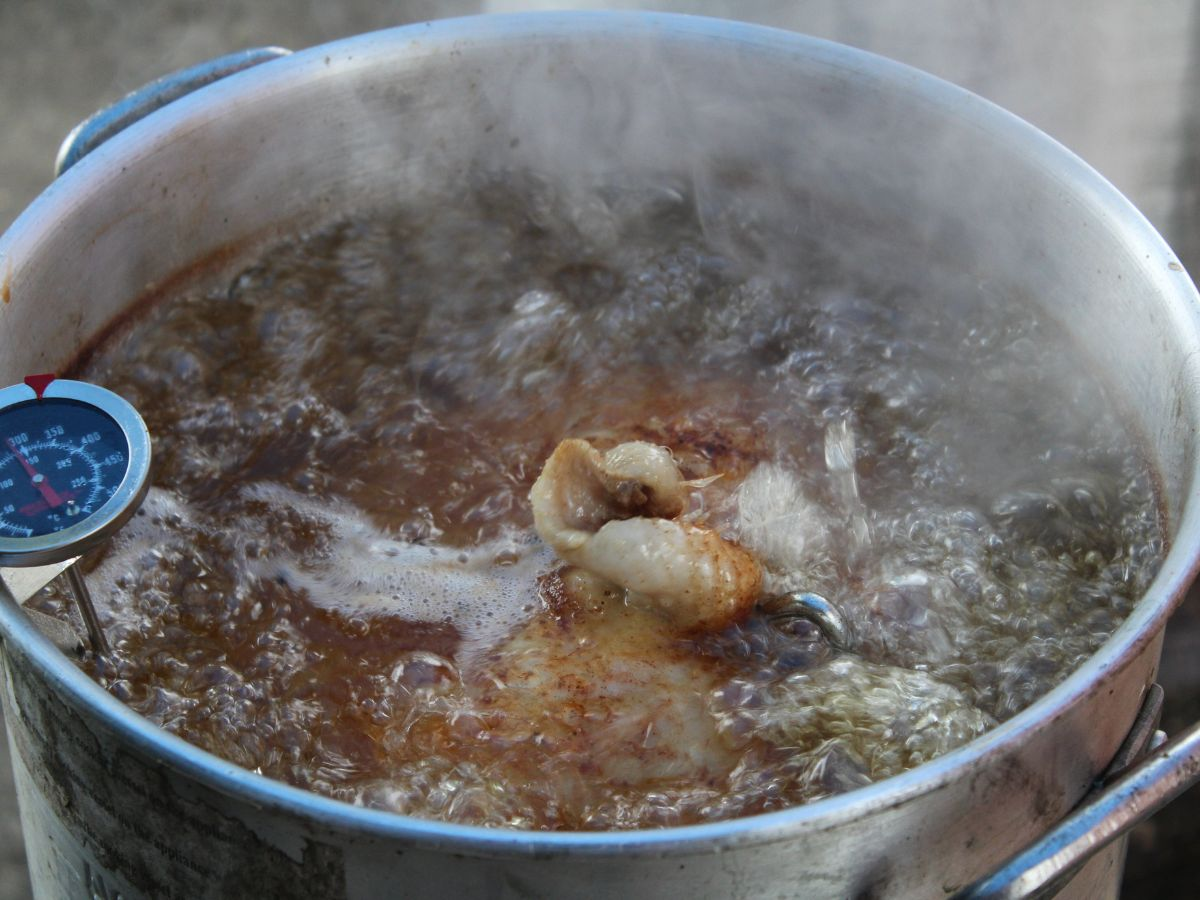
Moist Heat: Boiling turkey necks involves cooking them in water.
This moist heat method helps to soften the meat and connective tissues, making it more tender and easier for a small dog to chew and digest.
Kills Bacteria: Boiling also raises the internal temperature of the turkey necks, effectively killing harmful bacteria, such as salmonella and E. coli, that may be present in raw meat.
Safety Assurance: The thorough cooking and softening of the bones make the turkey neck less likely to splinter, enhancing safety for dogs.
It’s a simple way to cook turkey necks to perfection. Here’s how to do it:
Boiled Turkey Necks
Place the turkey necks in a pot and cover them with water.
Bring the water to a boil and let it simmer for 30-45 minutes until the meat is thoroughly cooked.
Let the turkey necks cool before your dogs eat. You can use the flavorful broth to enhance their regular meals with extra nutritional benefits.
Roasting: A Sizzle of Excitement
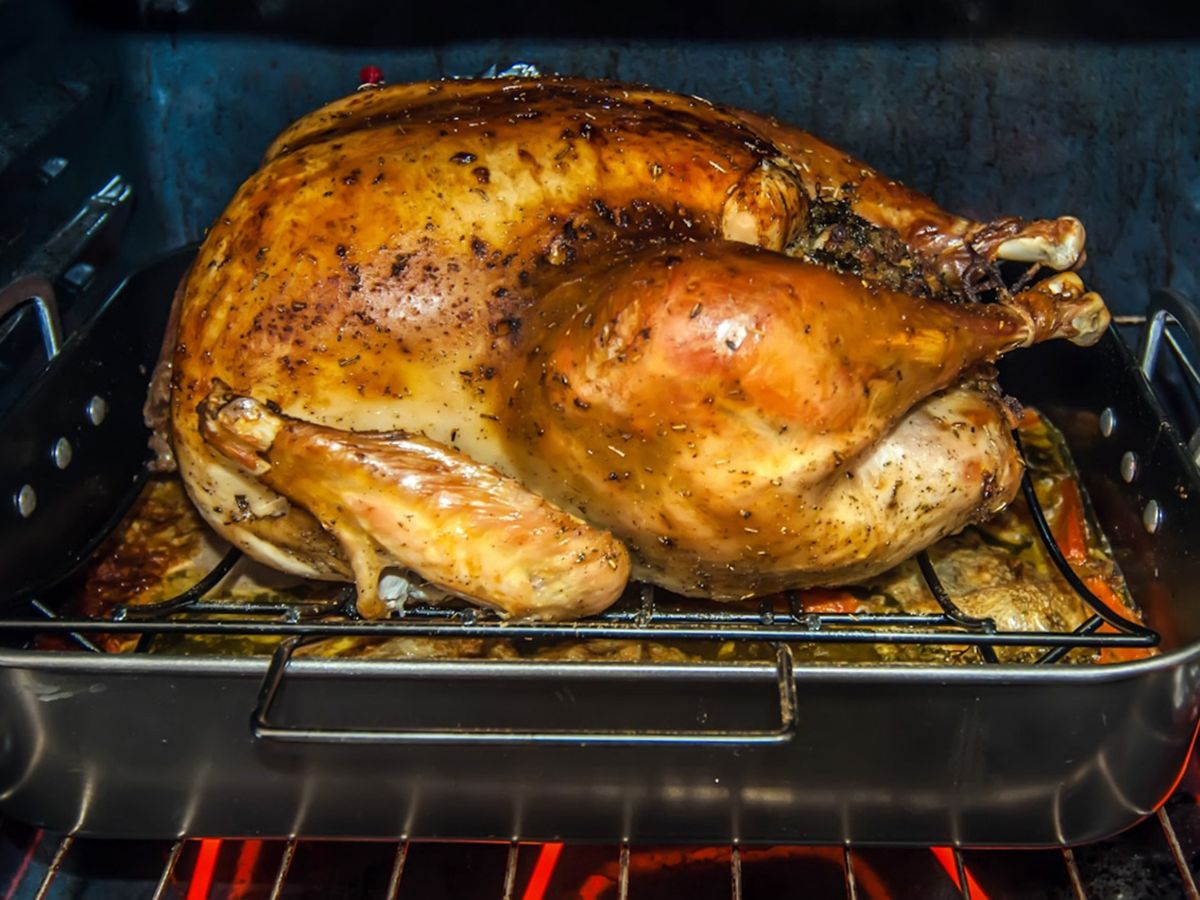
Dry Heat: Roasting involves cooking turkey necks in the dry heat of an oven. This method not only cooks the meat but also crisps up the skin.
Enhanced Flavor: Roasting enhances the flavor and aroma of the turkey necks, making them more palatable to dogs, which can make them even more enticing.
Safety Consideration: Roasting should be done carefully to ensure that the turkey necks are cooked through, and the bones are not too brittle, as brittle bones could pose a choking hazard.
Roasting turkey necks elevates their flavor and aroma, making them an irresistible treat. To do it:
Roasted Turkey Necks
Preheat your oven to 350°F (175°C).
Place the turkey necks on a baking sheet or in a roasting pan.
Roast for about 20-30 minutes until the meat is cooked and the skin is crispy.
Allow them to cool, then serve for your dog’s delight.
Slow Cooking: A Culinary Adventure
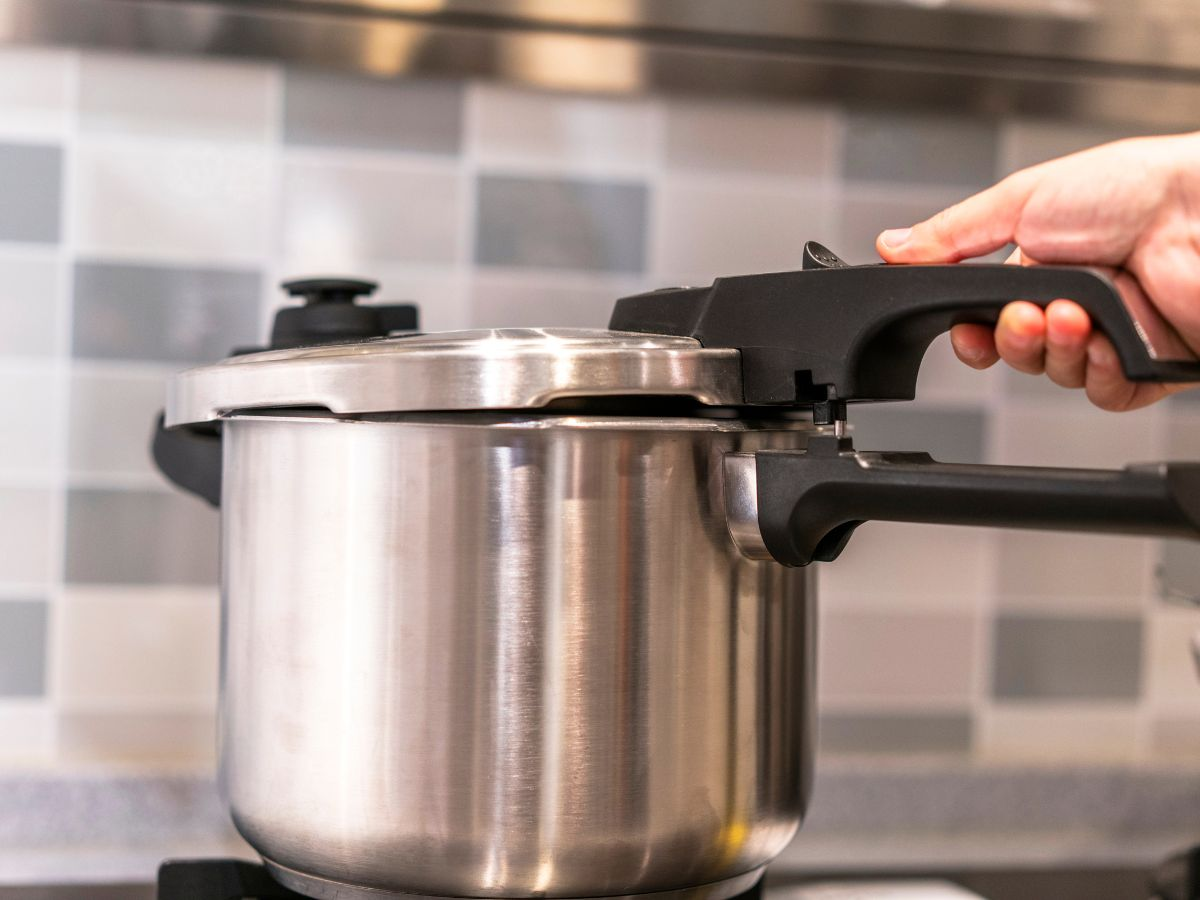
Low and Slow: Slow-cooking turkey necks in a crockpot or slow cooker at a low temperature for an extended period gently breaks down the meat and connective tissue over time.
Tenderizing: This method creates exceptionally tender meat that falls off the bones easily, reducing the risk of choking or digestion issues.
Safe Cooking: The extended cooking duration in a slow cooker also ensures that the turkey necks reach a high enough internal temperature to kill harmful bacteria, making them safe for consumption.
The slow cooker method turns turkey necks into tender morsels your dog will adore:
Slow Cooked Turkey Necks
Add enough water to cover the turkey necks in a slow cooker.
Cook on low for 6-8 hours until the meat is tender and quickly falls off the bone.
Let them cool before the dogs eat, remove small bones, and serve the meat.
Tail-Wagging Caution: Safety First
the key is to ensure that the turkey necks are cooked thoroughly and that any small bones are removed to prevent choking hazards.
Breaking down the various connective tissue and tissues, softening the meat, and eliminating harmful bacteria through cooking make the turkey necks safe and palatable for dogs to enjoy as an occasional treat and digest raw meat.
Always monitor your dog when giving them bones or treats to ensure their safety.
While turkey necks for dogs can be a fantastic raw food treat, remember to supervise your pet and remove any small bones that may pose choking hazards.
Cooking turkey necks using these methods makes them suitable and potentially vet-approved for dogs to eat for several reasons:
1. Killing Harmful Bacteria: Cooking the turkey necks thoroughly helps eliminate harmful bacteria like salmonella and E. coli that can be present in raw meat. This reduces the risk of foodborne illnesses in dogs.
2. Breaking Down Connective Tissues: Cooking makes the turkey necks more digestible for dogs by breaking down connective tissues and making the meat tender.
This ensures that the dehydrated turkey necks are easier for your dog to chew and digest, reducing the risk of choking or digestive issues.
3. Enhancing Flavor and Aroma: Cooking enhances the flavor and aroma of muscle meat in the turkey necks, making them more palatable to dogs. Dogs are more likely to enjoy the taste of cooked meat, which can make it a more enticing treat.
4. Bone Safety: Cooking the turkey necks can soften the bones, reducing the risk of splintering. However, you should still be cautious and ensure the neck bones are thoroughly cooked and not too small to prevent choking hazards.
5. Hygiene and Safety: Cooking the turkey necks helps ensure that the raw meaty bone itself is safe for your dog to consume, as it eliminates the risk of contamination that can be present in raw meat.
It’s important to note that while cooking turkey necks can make them safer for dogs to consume, you should always take precautions and monitor your dog while they are enjoying this treat.
Additionally, not all dogs have the same dietary needs and tolerances, so it’s a good idea to consult with your veterinarian to ensure that feeding your dog raw turkey necks or any other new food is appropriate for your specific dog’s health and dietary requirements.
So, there you have it – the thrilling world of cooking turkey necks for your four-legged friend.
The joy and excitement on their faces as they savor these homemade delights are worth every moment in the kitchen.
Show your dog how much you care with a little culinary adventure, and watch as they celebrate the flavors of your love.
FAQ and Additional Information
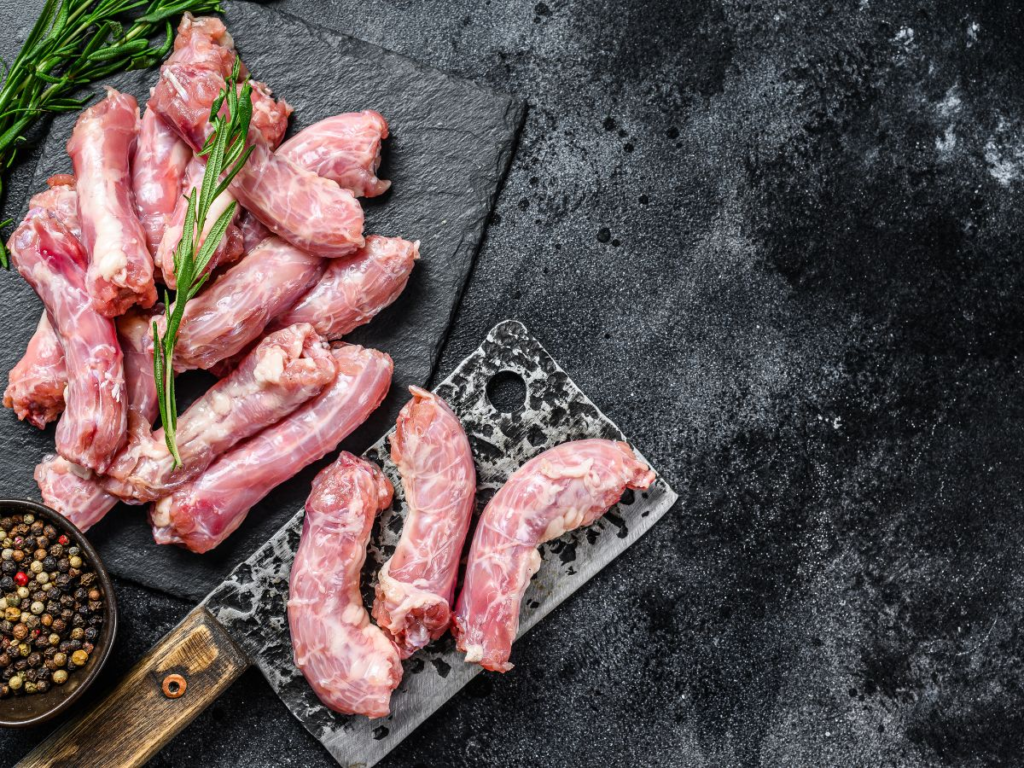
How to feed raw Chicken necks or Turkey necks to your Dog
Feeding your dog raw chicken or raw turkey neck and necks is a simple and nutritious treat. Here’s a quick guide:
1. Choose Fresh Neck: Select fresh, unseasoned, chicken neck or turkey necks. Ensure they’re appropriate for your dog’s size.
2. Supervise: Always supervise your dog when giving them a raw neck to prevent choking and monitor their chewing.
3. Portion Control: Adjust the size based on your dog’s breed and size. Small dogs should get smaller pieces than large dogs.
4. Regular Clean-Up: Dispose of uneaten portions of raw dog food to prevent bacterial growth.
5. Consult Your Vet: Talk to your vet about raw feeding to ensure it suits your pet food or dog’s diet.
Remember, feeding raw and turkey necks should be an occasional treat and not a primary diet.
How long to boil turkey neck for dogs?
Place turkey necks in a pot covered in water. Bring the water boil and let those turkey or chicken necks cook for approximately 20 minutes.
Can dogs eat turkey necks with bones?
Yes, dogs can eat raw paws pet food and a raw turkey neck with bones, but there are some important considerations to keep in mind to ensure their safety:
Raw vs. Cooked Bones: Many dog owners and experts recommend feeding raw bones rather than cooked bones. Raw bones are less likely to splinter and cause problems, as cooking makes bones brittle. If you feed a dog turkey necks with bones, opt for a raw turkey neck.
Size Matters: Ensure that the turkey necks you provide are appropriately sized for your dog. Larger dogs can handle larger bones, while smaller dogs should receive smaller pieces to prevent choking hazards.
Supervision: Always supervise your dog while they are eating bones. This allows you to monitor their chewing and ensure they are not trying to swallow large pieces.
Portion Control: dehydrated Turkey necks should be fed in moderation and not make up most of your dog’s diet. They can be offered as an occasional treat or part of a balanced diet.
Consult Your Vet: Before introducing to a dog raw turkey necks with bones into your dog’s diet, it’s a good idea to consult with your veterinarian.
Aren’t Poultry Bones Dangerous for Dogs?
Yes, poultry bones, including turkey bones and duck necks, can be dangerous for dogs if cooked, especially if raw meaty bones are small and brittle.
Cooking poultry bones like chicken necks makes them more likely to splinter when chewed, posing a significant risk to your dog.
However, when it comes to feeding dogs poultry bones like chicken necks, it’s important to note that the risk mainly applies to cooked bones.
Raw bones are less likely to splinter, and many proponents of raw feeding argue that a raw diet of poultry bones can be safe for dogs, particularly if fed with caution and appropriate supervision.
1. Choose the Right Bones: If you feed raw bones, select a pliable bone from grocery stores that are large and less likely to splinter, such as raw turkey necks, backs, or larger joints.
2. Supervision is Key: Always supervise your dog when eating raw bone to ensure they are chewing them safely and not attempting to swallow large pieces.
3. Avoid Cooked Bones: Never feed your raw dog food or cooked poultry bones. Cooking makes them brittle and much more likely to have sharp and pointy splinters
4. Know Your Dog: Pet Owners should Know your dog’s chewing habits and any potential sensitivities or allergies.
5. Consult Your Veterinarian: Before introducing bones into your dog’s diet, it’s advisable to consult with your veterinarian, who can provide guidance based on your healthy dogs’ dietary needs.
What Are the Health Benefits of Raw Turkey Necks?
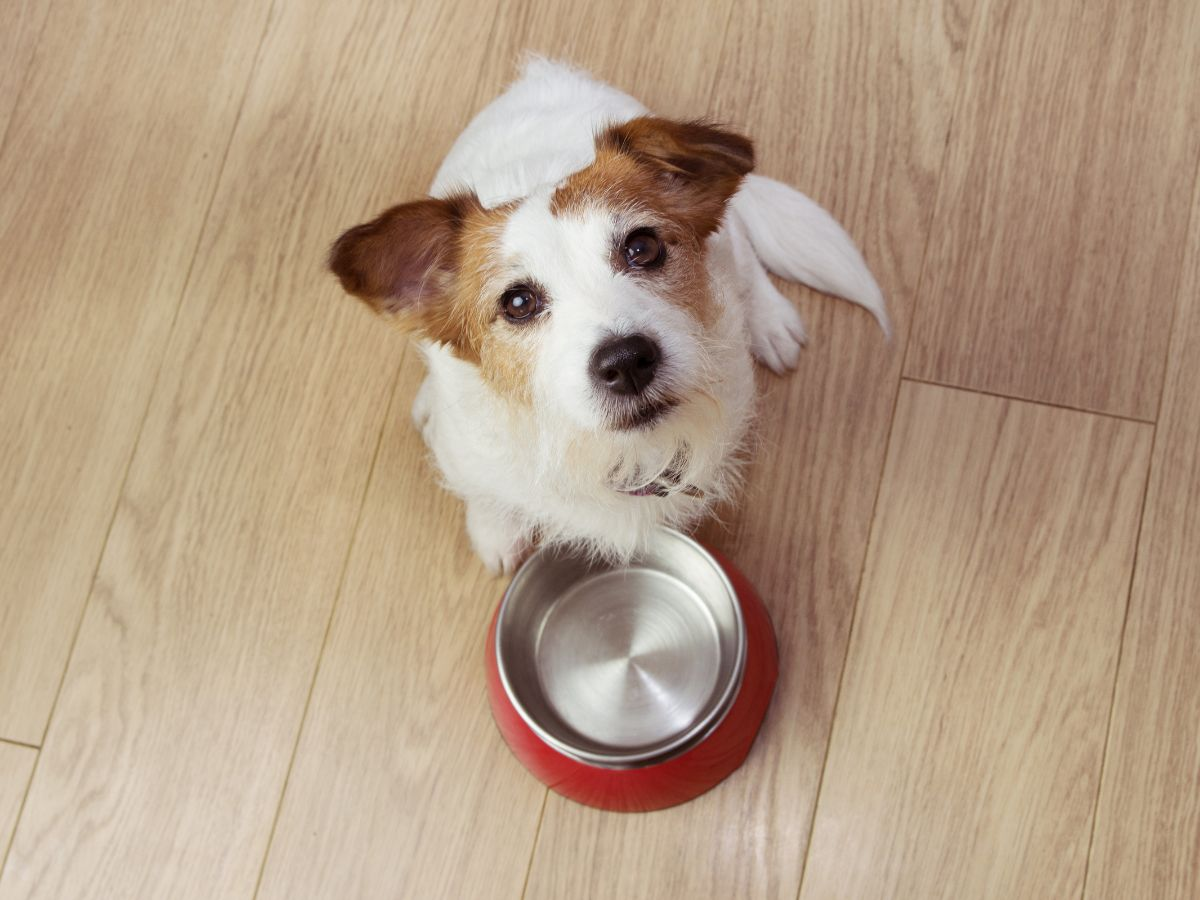
Dental Health: When Dogs eat raw turkey, necks can help naturally clean your dog’s teeth by removing plaque and tartar.
Natural Nutrients: Turkey necks are a source of essential nutrients, including protein, vitamins, and minerals.
They provide your pup wally with high-quality, bioavailable nutrients that improve overall health benefits.Joint Health: The connective tissues and cartilage found in turkey necks contain glucosamine and chondroitin, which can support joint health and potentially alleviate joint-related issues in most dogs.
Digestive Health: The raw meaty bones in turkey necks are soft and edible, making them a natural source of dietary fiber.
Lean Protein: Turkey and Duck necks are relatively lean, making them a good protein source without excessive fat, essential for muscle development and overall health. Freeze-dried Gives a Fun and Healthy Feel to a dog’s mouth.
Entertainment and Mental Stimulation: Trying them freeze-dried and Chewing on a turkey neck provides mental stimulation and can alleviate boredom for your dog wally.
What parts of a turkey can I give my dog?
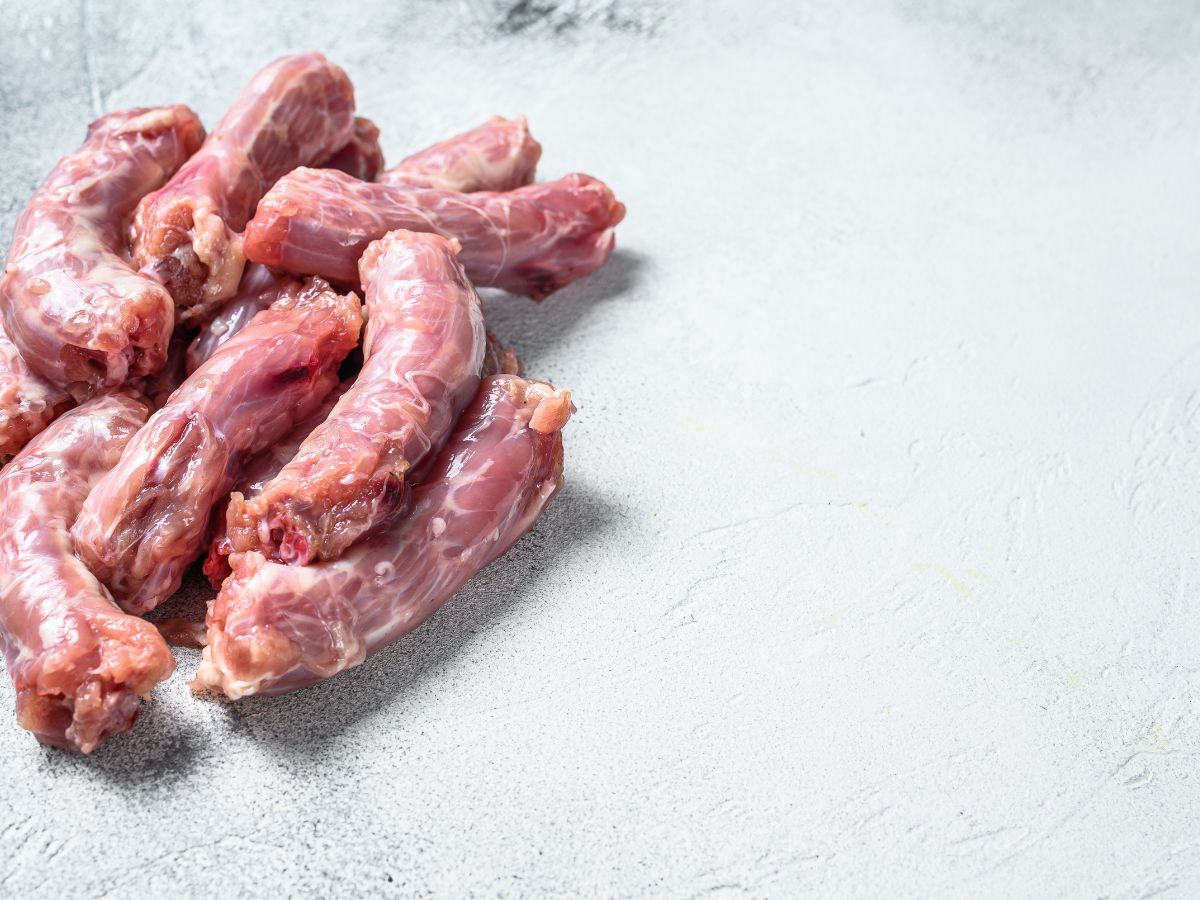
Turkey Breast: Skinless, boneless turkey breast is lean and high in protein, making it a healthy choice. Cooked turkey breast without seasonings or additives can be served to your dog in small, plain pieces.
Turkey Thigh Meat: Like raw turkey breast, the thigh meat is another lean option. Ensure it’s cooked and free from bones, skin, and seasoning.
Turkey Liver: The Turkey Giblets and liver is a nutritious organ meat that can be fed to your dog in small amounts. Try Dehydrated turkey necks or give your dog turkey necks with liver.
Turkey Gizzards: Gizzards are another organ meat option for dogs. They are a good source of protein and nutrients. Cook them thoroughly and offer small portions.
Turkey Heart: Turkey hearts are nutritious organ meat with high protein content. They are safe to feed to your dog when cooked.
Turkey Broth: Turkey bone broth made from simmering turkey bones and meat can be a flavorful addition to your dog’s food or used as a special treat and equally nutritious. Make sure it’s free of any harmful additives like onions or garlic.
Similar Articles You Will Love:
How To Cook Beef Liver For Dogs
How To Cook Carrots For Dogs
How To Clean Turkey Necks– YouTUBE

